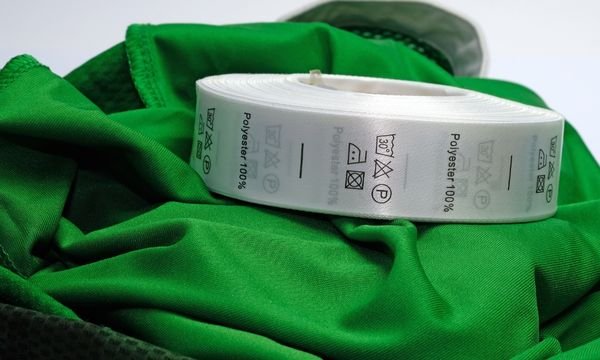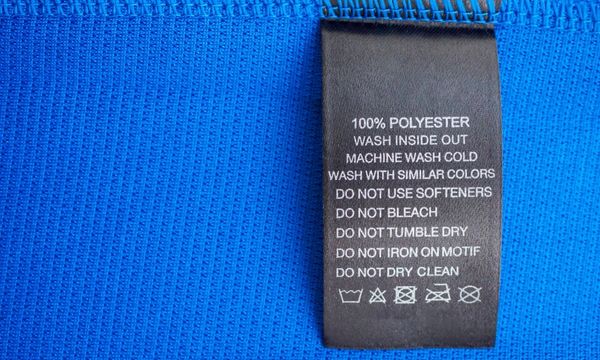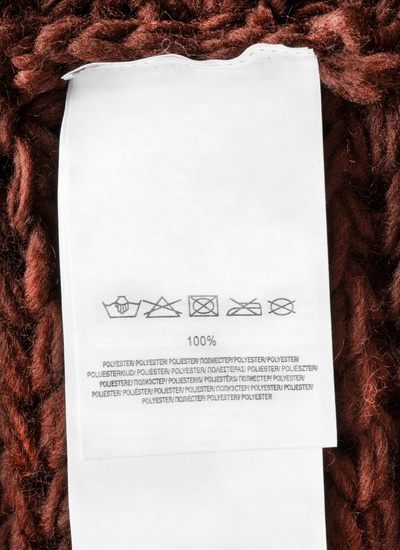Thinking of using polyester for your new project but not sure about polyester’s characteristics?
In this article, we will mainly discuss whether polyester is stretchable or not and under what circumstance would polyester be stretchy. We also mentioned the pros and cons of polyester and how to maximize and minimize them, respectively.
After reading this article, you will know what to expect when working on a project using polyester.
Does polyester stretch easily?

At first glance, this question might seem normal. But as we expand our knowledge about polyester, we will know that this question is actually *really* vague. How so?
A polyester fabric’s stretchiness depends on several factors: its wetness or dryness, the construction of its fabric, and its combination with other fibers. We will talk more about these later.
I think the clearer, more objective question would be: Does 100 percent polyester stretch?
Does 100 percent polyester stretch?
In this case, the answer is no. Pure polyester does not stretch.
We acknowledge that saying “polyester does not stretch” is not enough.
So, to better understand the nature and properties of polyester, we first need to know where polyester fiber comes from and how it is made.
We all know that cotton fabric comes from cotton plants that are harvested and then mechanically processed. Thus, cotton is a natural fiber.
Polyester fabric, on the other hand, is man-made. With this, you might wonder: Is polyester synthetic? Yes, polyester is synthetic.
Polyester fibers are a product of the chemical reaction of three ingredients: water, air, and petroleum. This chemical reaction results in a chemical called polyethylene terephthalate (PET), which we also informally know as “polyester”.
This chemical is melted at high temperatures and then pushed through what looks like an oversized sieve to create long threads. Once the threads cool and harden, they will be twisted together to make polyester yarn.
For further context, polyethylene terephthalate is the same chemical used to make plastic water bottles. So, in essence, polyester fibers are made of plastic.
Does plastic stretch? Not much. The same can be said about polyester fibers.
But there are some reservations about this. So, let us go back to the main question.
Does polyester stretch out?

As mentioned earlier, polyester can be stretchy depending on how the fabric is constructed, whether it is wet or dry, and whether it is combined with other fibers or not.
Let us tackle the simplest factor first: moisture.
Just like any other fabric, polyester can be slightly more stretchy when wet than it is when dry. But even if you stretch it while wet, there will not be any noticeable expansion in the fabric.
Next, let us talk about the construction of the fabric.
Again, polyester fiber is basically plastic. This makes it durable and non-elastic. However, if these fibers are woven in a particular way, the resulting fabric may be stretchable.
The plain weaving pattern, in which vertical and horizontal threads move over and under each other alternately, does not offer room for stretch. Woven fabrics are made of several separate threads that are arranged together to create a piece of fabric.
If you pull it vertically, holding the top and bottom parts of the fabric, it will not stretch. If you pull it horizontally, holding both sides of the fabric, it will still not give in.
But, just like any other fabric, it may stretch minimally when you pull it diagonally, holding two opposite corners.
Modern textile experts employ new weaving techniques to give some elasticity to 100% polyester fabric. One effective technique is knitting.

Knit polyester offers more stretchability than woven polyester.
Knitted polyester is made of one single thread of polyester fiber which is interlocked with each other in a way that creates relatively big loops. These loops are responsible for the stretchiness of knitted fabrics.
So yes, even 100% polyester can stretch when constructed properly.
Lastly, let’s explore the other fibers that can be combined with polyester. All kinds of fibers have their own share of advantages and disadvantages.
We can minimize the disadvantages while maximizing the advantages if we combine fibers to create a specific type of fabric.
Since we are talking about polyester here, let us focus on its pros and cons. Then, let’s see what fabrics are best paired with it to make the most of its pros and downplay its cons.
Pros and Cons of Polyester
A great advantage of polyester is that it is cheap yet durable. Unlike cotton, manufacturing polyester is much easier and cheaper. This is probably why most fast-fashion businesses largely use polyester on their products.
Also, just like plastic, polyester is made to stand the test of time. It is wind-, water-, flame-, and mold-resistant. It also retains its shape and does not wrinkle easily.
The fact that polyester does not need to be ironed frequently was its selling point when it first hit the market back in the 1970s.
Polyester can be reshaped at high heat. It can retain its new shape once it cools down. This makes polyester the perfect fabric for clothes with pleats and other kinds of folds.
Another advantage is that polyester is non-absorbent, which means they do not suck in moisture. Thus, they don’t easily get wet.
However, polyester is not breathable. Air does not freely move through the gaps of woven polyester fabric. This makes polyester clingy on the skin, especially when wet.
Luckily, polyester is versatile. You can combine it with other fibers for more functionality. The most common polyblends are poly-cotton and poly-spandex.
Polyester Blends
Since polyester is rigid and not stretchy, we can mix it with stretchy fibers like nylon or spandex.
As a result, we get a fabric that is durable, elastic yet resilient (which means it easily goes back to its original shape), and fast-drying. This blend is used in swimwear and athletic wear.
Since polyester is not breathable, we can combine it with cotton.
Cotton is naturally breathable and soft. Combining these two results in a fabric that is cheap yet durable, soft, and comfortable. You can find polycotton blends in T-shirts and hoodies.
You can get the best of all worlds by combining three or more fibers in one fabric. One example is tri-blend fabrics, usually consisting of cotton, polyester, and spandex. But it can also be an entirely different combination.

Tri-blends are not necessarily composed of equal parts of fibers. Sometimes, a tri-blend fabric comprises 75% cotton, 15% polyester, and 10% spandex. This combination depends on what the fabric will be used for.
How much does polyester stretch?
We already established that polyester can stretch under the right conditions, but how much does it stretch?
As discussed earlier, 100% polyester does not stretch much even if you pull it in all four directions. But what about polyblends?
Does polyester and spandex stretch?
Yes. The greater percentage of spandex, the bigger the stretch.
Poly-spandex can stretch in all four directions and can reach twice its original size with the right proportions.
Does cotton and polyester stretch?
Not much.
Is polyester more stretchy than cotton? No. Cotton is more stretchable than polyester but not as stretchable as spandex.
Poly-cotton can only stretch as much as cotton does, and even that depends on the proportions of the blend. It may stretch maybe around 3% of its original size. Needless to say, a 3% stretch would be nowhere near noticeable.
Does polyester shrink or stretch?
Polyester does not stretch. It also does not shrink.
Made to be durable and long-lasting, polyester generally retains its shape even after several washes and wears.
However, polyester may shrink under extremely high temperatures due to its plastic properties. So, if you want to shrink your polyester for some reason, you may want to expose it to high heat.
Should you size up in polyester?
Since polyester neither stretches nor shrinks, it is safe to conclude that polyester runs true to size.
So, no, there is no need to size up in polyester unless you’re going for an oversized look.
Does polyester stretch after washing?
Again, polyester is made to be durable. It can basically survive anything, which is why it is an environmental problem (that is a topic we can save for another blog).
No, you do not have to worry about shrinking or stretching your polyester fabrics.
Even if you wash polyester with warm water, it will neither shrink nor stretch. It can also survive thousands of twists and turns inside the washing machine.
Polyester is resilient. It will retain its original shape unless exposed to high temperatures in which they become malleable.
In poly-blends, consider the properties of the blended fiber before washing.
For example, cotton tends to shrink when washed with hot water. So, if you have a 50-50 poly-cotton blend, it is better to wash that fabric with cool water instead of warm.
Does polyester stretch in jeans?
Without a doubt, polyester is a game-changer in the denim industry.
We used to have 100% cotton jeans that were soft and breathable. Cool. But it can even be better when blended with a small percentage of polyester.
Some relaxed-fit jeans are made of 75% cotton, 24% polyester, and 1% spandex. This results in a pair of jeans that are much more durable and offer a bit more stretch (because of the spandex) than 100% cotton.
Other jeans improved a lot by adding as little as 10% polyester. This is because polyester makes the fabric much more durable. Hence, it becomes less prone to shrinking and abrasions.
All in all, polyester’s role in jeans is not to increase stretchability. Instead, polyester helps increase a pair of jean’s durability.
Is polyester dress stretchy?
Polyester is usually blended with other fibers to make it stretchy. So if we are talking about 100% polyester here, then, no, polyester dresses are not stretchy.
Most dresses made with polyester are either pleated or have a relaxed fit. Stretchy polyester dresses are possible when combined with elastic fibers like lycra.
We can find polyester in almost every piece of women’s fast fashion clothing because it is cheap. Every year, women’s fashion has a new trend.
So, even if polyester is durable, fast fashion clothes made from polyester do not sit long in one’s wardrobe because they can easily and cheaply be replaced by new ones.
As a result, polyester clothes end up in landfills and would take decades to decay. This is one huge disadvantage of using cheap polyester.
Is polyester comfortable?
The comfort that polyester brings highly depends upon its purpose.
If you use polyester for activewear, you certainly would feel much more comfortable than you would if you used cotton.
Due to polyester’s moisture-wicking properties, sweat does not readily absorb into the fabric. Instead, the sweat stays on your skin, where it evaporates much more quickly than when absorbed by the fabric.
But if you use polyester for everyday wear such as t-shirts, you might not find it comfortable. Polyester, although it wicks away moisture, is not breathable.
What is the difference between being moisture-wicking and being breathable?
The ability to wick away moisture is similar to the ability to resist water, resulting in a fast-drying yet clingy fabric. The fabric clings to the skin when wet. Imagine how your swimwear sticks to your skin as soon as you jump in the pool.
Breathability, on the other hand, is the ability of the fabric to let air pass through it.
Polyester fabric does not have large enough gaps between its threads to allow air circulation. Thus, polyester can feel hot when worn. Probably not something you would want for everyday clothing.
We can maximize comfort and functionality by combining polyester with fibers such as cotton (which allows for breathability) and spandex.
Durability and comfort
In conclusion, polyester is not stretchy on its own. But if you are looking for stretchy polyester, there are poly blended fabrics that can satisfy your needs.
What’s unique about polyester is that it is undeniably durable and versatile. It fortifies the fabrics that you blend it into. Regardless of the characteristics that polyester lacks, these two traits make it indispensable.




Leave a Reply